The Story of the Salt Shed
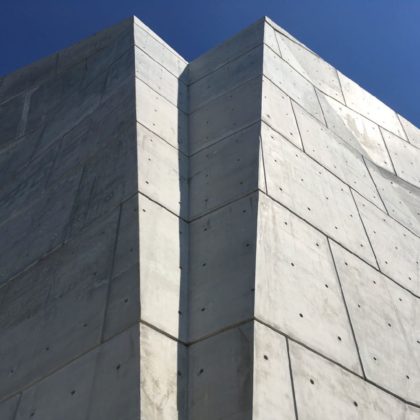 Jolene Howard attended the recent Soho Photo gallery talk, facilitated by photographer/member Bob Leonard, about the New York City Department of Sanitation’s Spring Street Salt Shed. Below her report is a series of photos showing the structure’s rise.
Jolene Howard attended the recent Soho Photo gallery talk, facilitated by photographer/member Bob Leonard, about the New York City Department of Sanitation’s Spring Street Salt Shed. Below her report is a series of photos showing the structure’s rise.
It was my first visit to the gallery and won’t be my last: The seven exhibits on currently on display in the lofty space were beautifully presented. The setting was ideal for the fascinating conversation with Salt Shed architects Claire Weisz (WXY Studio) and Paul Bauer (Dattner Architects).
I’ve toured the impressive DSNY facilities on Spring Street—and you can, too, during OHNY—so it was a treat to hear firsthand about the lengthy, complicated design process for this award-winning public work. Attendees asked about the motivations and intentions behind the shape of the Salt Shed, the materials used, and what led to the project earning LEED Gold certification.
Each of the two buildings—the Salt Shed and the Manhattan Districts 1/2/5 Garage—is special in its own right. The Salt Shed, shaped like an actual salt crystal, is composed of concrete that reflects the light that bounces off the delicate glass curtain wall of the DSNY garage across Spring Street. It’s an interesting contrast of shapes, materials, and surfaces.
Seven things I learned:
••• Originally, all elements of the DSNY project were intended to be housed in one building, where the garage is now. The separate Salt Shed came about after UPS, which owns the north building, agreed to share it.
••• Except for the opening, the Salt Shed is composed of concrete retaining walls that are six-feet thick at the base.
••• The concrete, made from natural materials of sand and crushed stone, was chosen because it’s resistant to corrosion—which is important in a giant salt container. It’s also a result of value engineering: The completed project came in $40 million under the $245 million budget.
••• The concrete was cast in place, a risky technique that was considered ideal for the unique tipping-wall construction.
••• Ten million one-pound Morton Salt containers would fit in the Salt Shed.
••• The choice of glass tiles around the perimeter, designed by Domingo Gonzalez, was aesthetic and practical. In addition to creating an illusion that the shed is floating in water, the glass reflects sunlight up the structure during the day, provides natural light to the vaults below, and amplifies the reflected glow of the embedded lights at night. The architects acknowledged, however, that the glass is not holding up.
••• The north building is insulated with a one-and-a-half-acre green roof that enables the DSNY to heat the garages as well as collect and reuse tens of thousands of gallons of gray water—appropriate for a city agency that emphasizes recycling. Washing the trucks requires a lot of water, much of which is provided by the roof runoff.







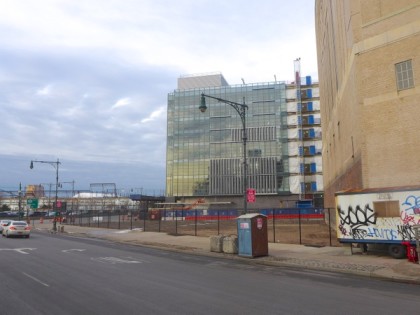

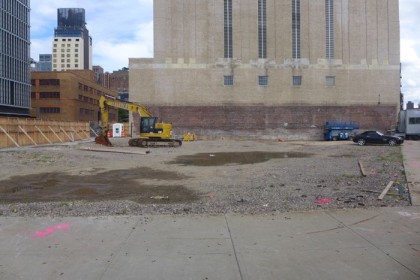
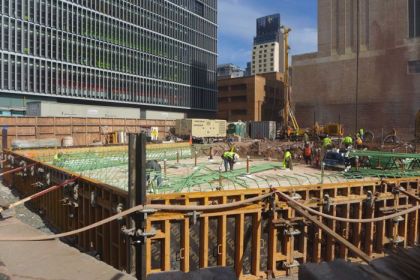

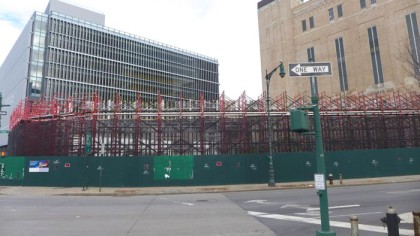
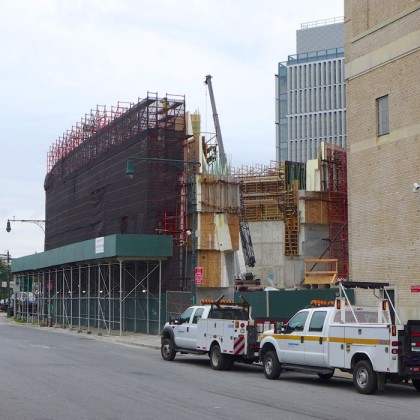
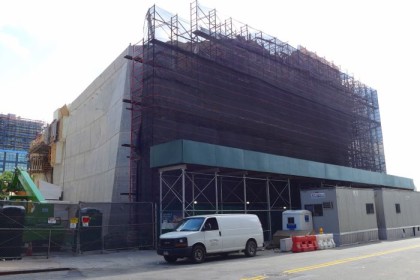
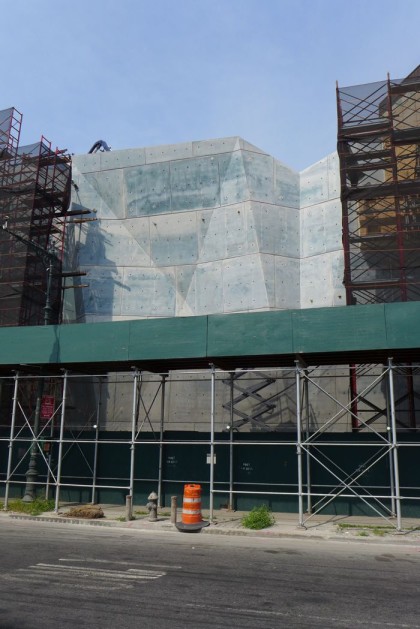

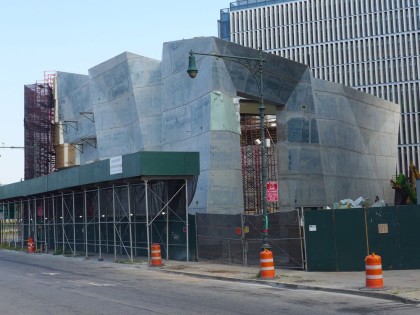
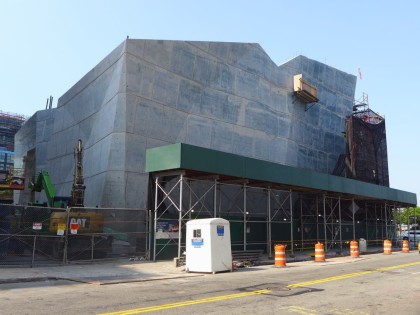
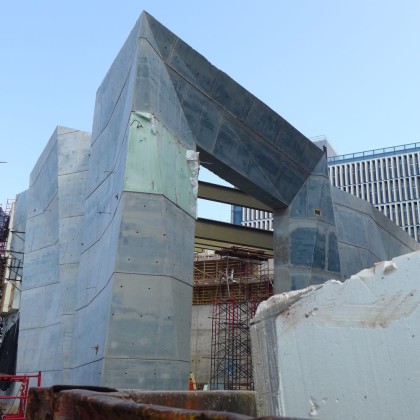
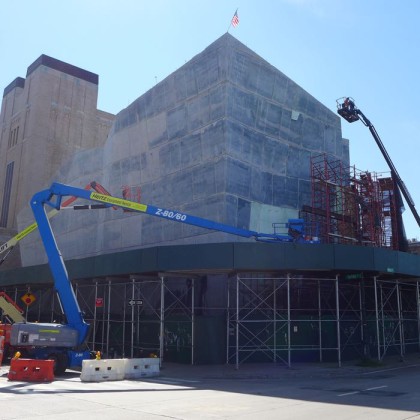
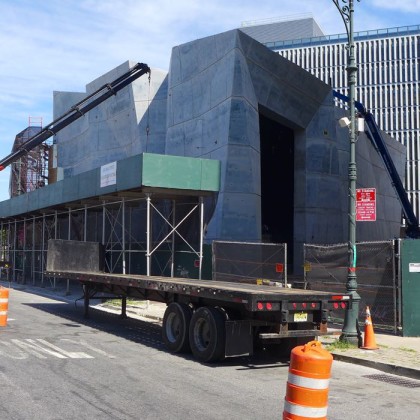
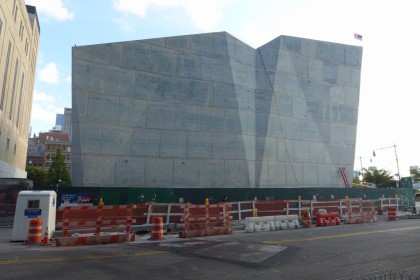
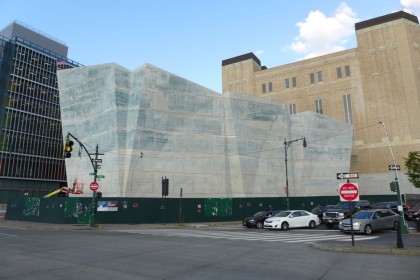

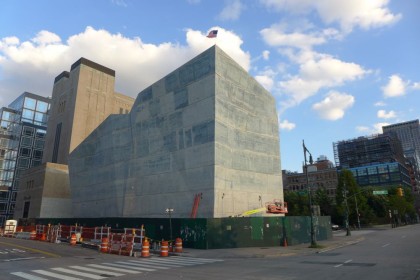
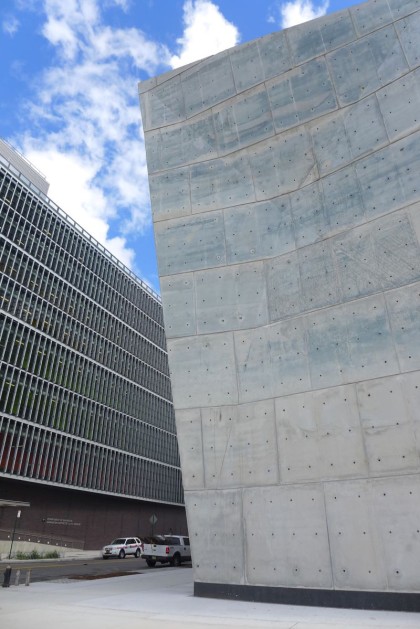


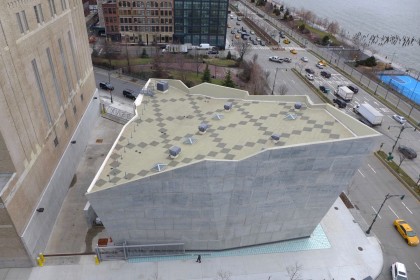







The building is a beautiful geometric sculpture in its own right.
All hail the salt shed! It is glorious.